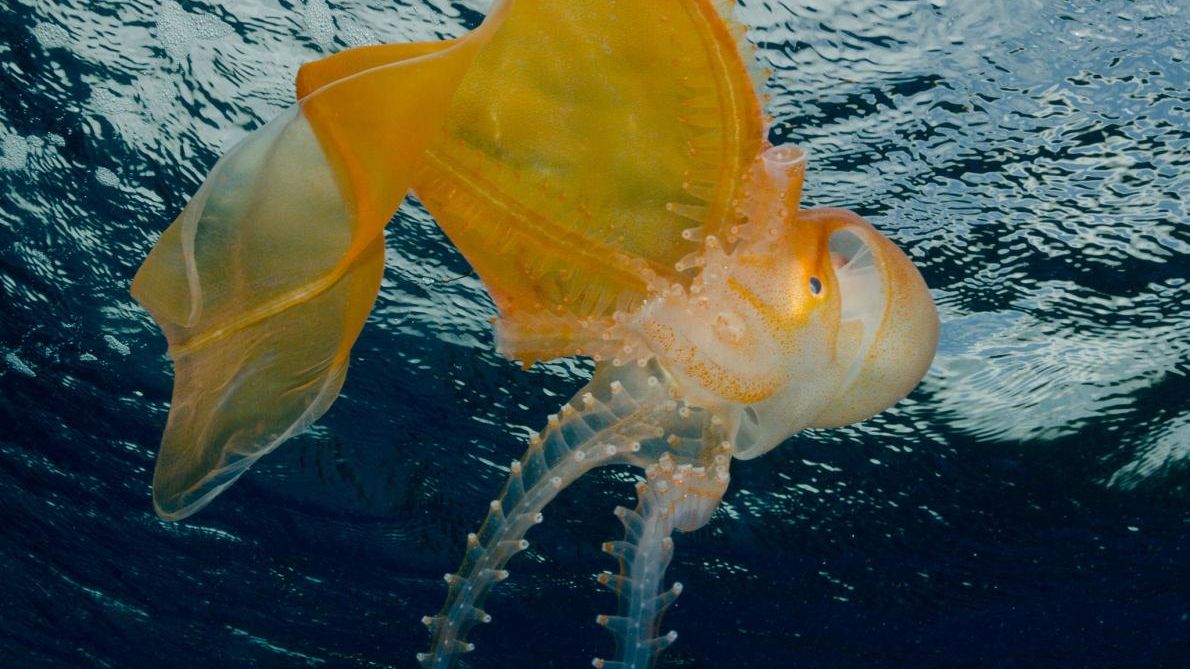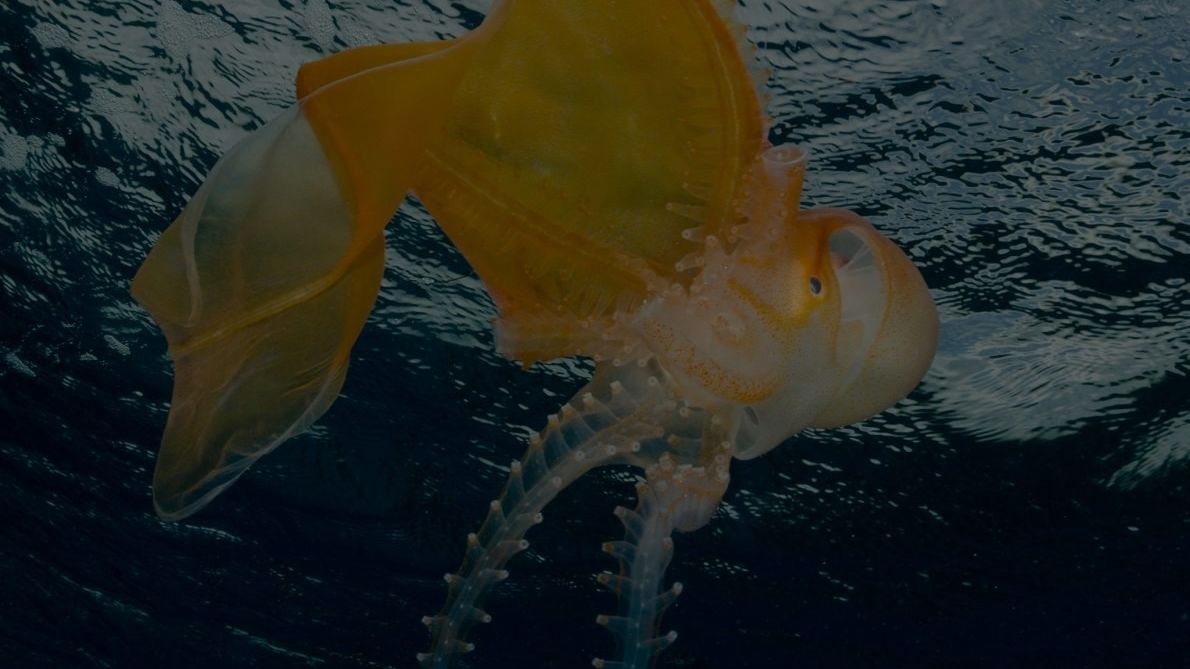Blanket Octopus
With the largest sex size discrepancy in the animal kingdom, a male blanket octopus weighs 40,000 times less than the female.

Kingdom
Animalia
Phylum
Mollusca
Class
Cephalopoda
Order
Octopoda
Family
Tremoctopodidae
Genus
Tremoctopus
#Description
The Blanket Octopus gets its name from its female counterpart: rarely-seen and super-sized, the female blanket octopus has a long, fleshy ‘cape’ enclosing its tentacles. This cape makes the octopus appear larger and more intimidating to potential predators. Though the female blanket octopus is already large—growing to around 2 metres in length!
In contrast, the male blanket octopus measures a mere 2.4cm—smaller than a walnut—meaning the blanket octopus have the largest sex size discrepancy in the animal kingdom!
#Habitat and diet
The blanket octopus is found in both subtropical and tropical oceans, living amongst the coral reefs. Being nomadic creatures, they move about to different locations every couple of days. These graceful creatures can adapt to a variety of water temperatures, expanding the water they can roam in.
The blanket octopus is carnivorous, with a diet that consists mostly of smaller fish. This octopus has one of the strangest methods of hunting prey: using a tentacle ripped from toxic jellyfish as a weapon.
#Intelligence
Octopuses are known for their intelligence and the blanket octopus is no exception. They can learn and recall, as well as mimic behaviours exhibited by other octopuses. They have also been observed to demonstrate temperaments and preferences towards different behaviours and creatures. This, combined with their creative method of protection and hunting, suggests a high intelligence for the elusive octopuses.
#Blanket Octopus facts
1.
The blanket octopus is immune to the deadly sting of jellyfish tentacles!
2.
There are currently four species of blanket octopus known.
3.
Only female blanket octopuses have their famed blankets! The males do not have a cape at all.
4.
The blanket octopus’ predators include larger fish and whales!
5.
In 2017, a rare female blanket octopus was spotted off the Great Barrier Reef!
#Behaviour and Reproduction
Blanket octopuses spend their whole lives (3-5 years) floating in the open ocean, and, when threatened, swoop down into deeper waters with their capes flowing behind them. The blankets can be folded under the octopus’ arms to make for a faster getaway, if needed. This cape can be detached when the octopus is in distress, to distract or cling to a predator. With a hydrostatic organ, the octopus can maintain depth without floating upward or sinking, so it never exhausts itself swimming.
Mating for the blanket octopus is deadly. The tiny male expends all its resources in an attempt to mate, breaking off its third arm in the process and dying shortly after. The female continues on, carrying over 100,000 eggs until they hatch. After that, she will most likely die as well.
#Threats
There are no great threats to the blanket octopus. Though coral reefs are important habitats to them and they rely on the flourishing of the coral.
#IUCN Red List status
The blanket octopus is listed as least concern (population trend unknown) on the International Union for Conservation of Nature’s Red List of Threatened Species.
LC
Least concern

